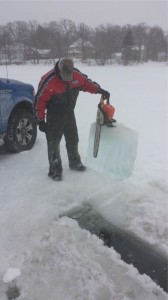My draft was meant to be for the Annex only. It was not intended to be included, or as a supplement to, the normative part of the standard. I offered the draft of the Annex more to stimulate discussion than expecting it to be incorporated in its entirety. As I have said from the beginning. I believe that the HLS should remain largely intact without significant discipline specific additions. Most discipline specific language for clarification of intent should be introduced in the Annex.
I like the idea of working the development process of this and other standards like ISO 14001 from back to front. In other words, let’s work on the Annex (informative part of the standard) first, agree on what we want it to achieve and what the Annex should contain, and then decide what needs to be changed in the normative part of standard to meet the discipline specific outcome we want.
I also understand the desire to use much of Z10 to form the basis for ISO 45001. However, I believe that we can improve upon the ideas presented in Z10 as we develop 45001, especially appendix F and the example risk matrix it contains.
Regarding the question of how opportunities should be addressed in the standard, I believe it matters little where opportunities are addresses. It may be appropriate to address them in both 8 and 10 and maybe a little bit in 6. I do however believe that we need to have a better idea about what we mean by opportunities before we add discipline specific language to the HLS in any or all of those clauses.
I believe there are at least two types of opportunities that can be identified, those being opportunities to reduce risk, and those opportunities that can result in other value enhancement. Sometimes exploiting one type of opportunity comes at the expense of the other.  Ice diving is a good example. Personally I think you need to be out of your mind to do it, but some folks find great pleasure in scuba diving below the ice and take every opportunity they can to enjoy it. One of the hazards of ice diving is getting lost under the ice and not being able to return to the hole before your air supply is exhausted. The bigger the hole, the easier it is to find when you want out of the water. But cutting a big hole through 3 foot thick ice is hard and there comes a point where the discomfort in cutting the hole out weights the fun the divers expect to have on their adventure. So the divers manage the likelihood of becoming trapped beneath the ice in other ways, like roping up and having folks at the surface holding the other end of the rope. Managing the risks and enjoyment of an ice dive becomes an optimization problem.
Ice diving is a good example. Personally I think you need to be out of your mind to do it, but some folks find great pleasure in scuba diving below the ice and take every opportunity they can to enjoy it. One of the hazards of ice diving is getting lost under the ice and not being able to return to the hole before your air supply is exhausted. The bigger the hole, the easier it is to find when you want out of the water. But cutting a big hole through 3 foot thick ice is hard and there comes a point where the discomfort in cutting the hole out weights the fun the divers expect to have on their adventure. So the divers manage the likelihood of becoming trapped beneath the ice in other ways, like roping up and having folks at the surface holding the other end of the rope. Managing the risks and enjoyment of an ice dive becomes an optimization problem.
The ISO 45001 standard Annex (either 6, 8 or 10) should include information to help users understand the relationship between risks and opportunities and that there are different types of opportunities they can exploit. Once we have the right language in the annex, we can then think about what changes might be need in the standard itself to make the HLS work for the OH&S discipline. Again this is the back to front approach to standard development I prefer.






